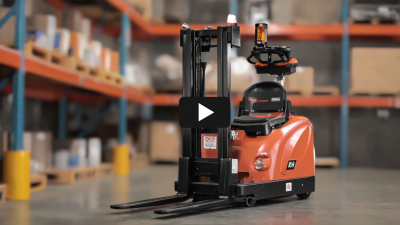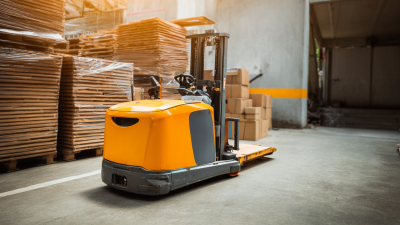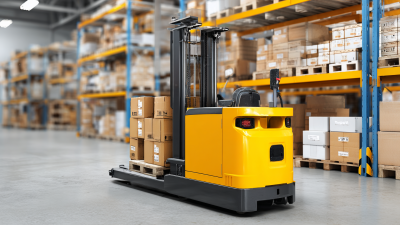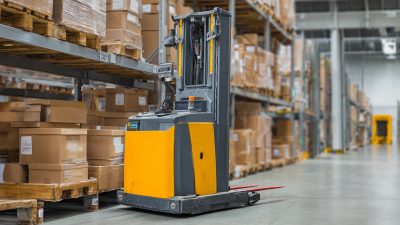Leave Your Message
In the fast-paced environment of modern warehouses, the efficiency of material handling equipment can dramatically impact productivity and operational costs. Among the various options available, the Rideable Pallet Jack has emerged as a critical tool for enhancing workplace efficiency. According to data from the Material Handling Industry of America (MHIA), warehouses utilizing advanced material handling technologies, including rideable pallet jacks, have witnessed a 20% increase in operational efficiency. These electric-powered devices not only reduce the physical strain on workers but also enable quicker, safer transportation of goods across warehouse floors.

With the right Rideable Pallet Jack, businesses can streamline their logistics processes, cut down on labor costs, and adjust swiftly to changing demands. This guide aims to provide warehouse managers and decision-makers with essential insights into selecting the best rideable pallet jack tailored to their specific needs.
When selecting a rideable pallet jack for your warehouse needs, it's essential to understand the various types available on the market. Rideable pallet jacks can generally be divided into two main categories: the rider-seated models and the rider-standing models. Rider-seated pallet jacks are designed for extended use, providing operators with comfort and reducing fatigue during long shifts. These models are typically equipped with a larger platform, allowing for greater stability when transporting heavy loads across vast warehouse spaces.
On the other hand, rider-standing pallet jacks are ideal for facilities with limited space where maneuverability is key. These models allow operators to stand while driving, which can enhance agility and speed in tight aisles. They often come with a more compact frame, making them easier to operate in constrained areas. When choosing between these two types, considerations such as the size of the warehouse, the typical load weight, and the required maneuverability should guide the decision, ensuring that the selected pallet jack aligns with operational efficiency and worker safety.
When selecting the best rideable pallet jack for your warehouse, it's essential to focus on key features that can enhance efficiency and ensure safety. One of the primary considerations is the weight capacity. Ensure the pallet jack can handle the heaviest loads you typically deal with, as overloading can lead to equipment failure and accidents in the workplace. Another crucial feature is the fork length; longer forks can accommodate larger pallets, while shorter options may be more maneuverable in tight spaces.
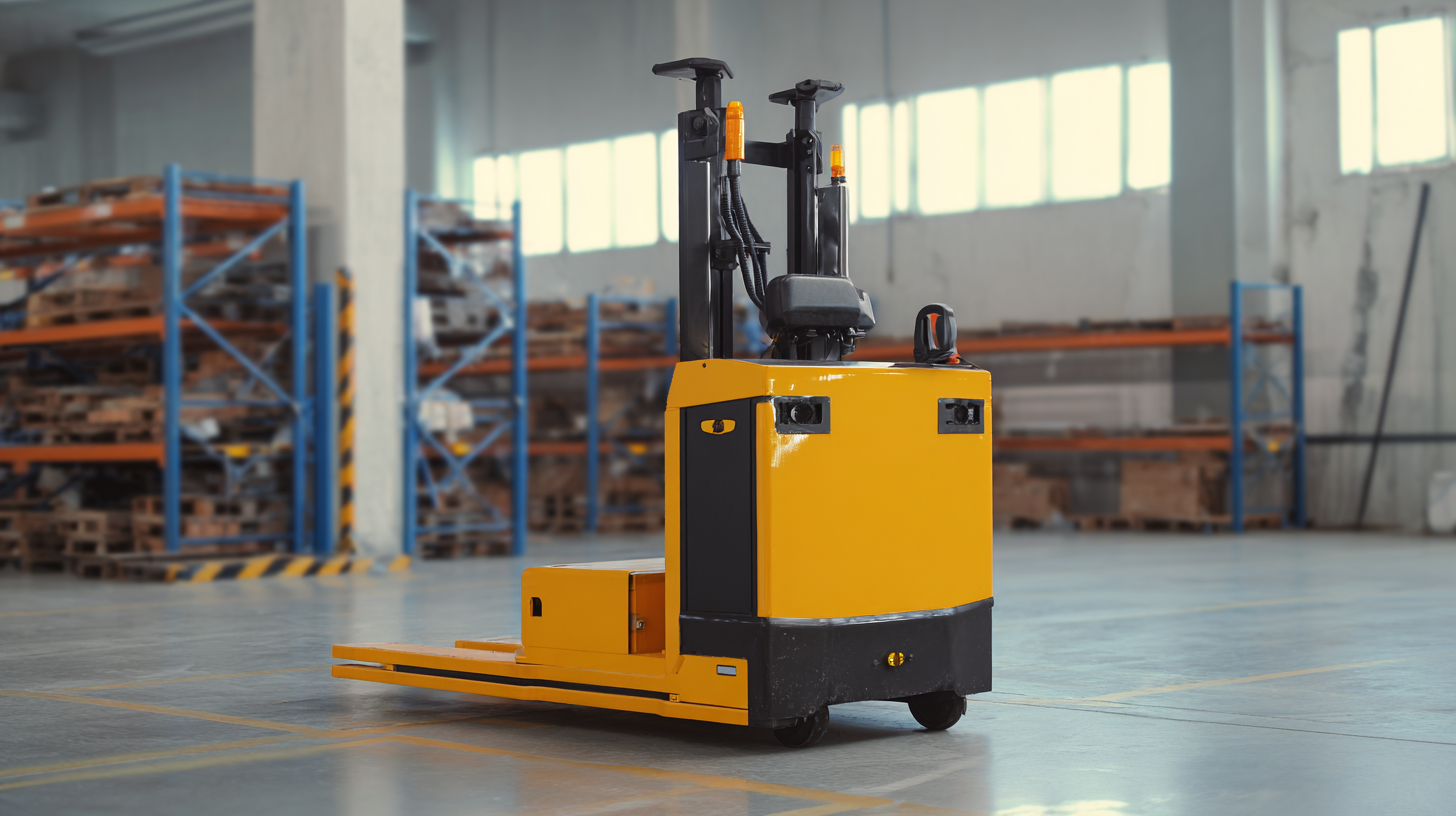
Tips: Always test the turning radius of the pallet jack in your warehouse layout before making a purchase. A compact design may offer better maneuverability in confined spaces, reducing the risk of collisions and improving workflow.
Additionally, consider the ergonomics of the rideable pallet jack. Features such as adjustable seats, steering controls, and easy access to controls can significantly reduce operator fatigue and increase productivity. Battery life and charging time are also critical; investing in a model with a long-lasting battery can minimize downtime and enhance operational efficiency.
Tips: Regular maintenance checks can prolong the lifespan of your pallet jack. Keep an eye on the battery condition, check the wheels for wear, and ensure that the hydraulic system is functioning properly to avoid unexpected breakdowns.
When selecting a rideable pallet jack for your warehouse operations, evaluating the load capacity and size requirements is crucial. Load capacity directly affects efficiency; you must consider the heaviest items you’ll be transporting. Most rideable pallet jacks come with different capacity ratings, commonly ranging from 4,000 to 6,000 pounds. Ensure you choose a model that not only meets your current needs but also offers some margin for future growth. Overloading a pallet jack can lead to safety hazards and equipment failure, so it's essential to keep a close eye on the maximum weight limits.
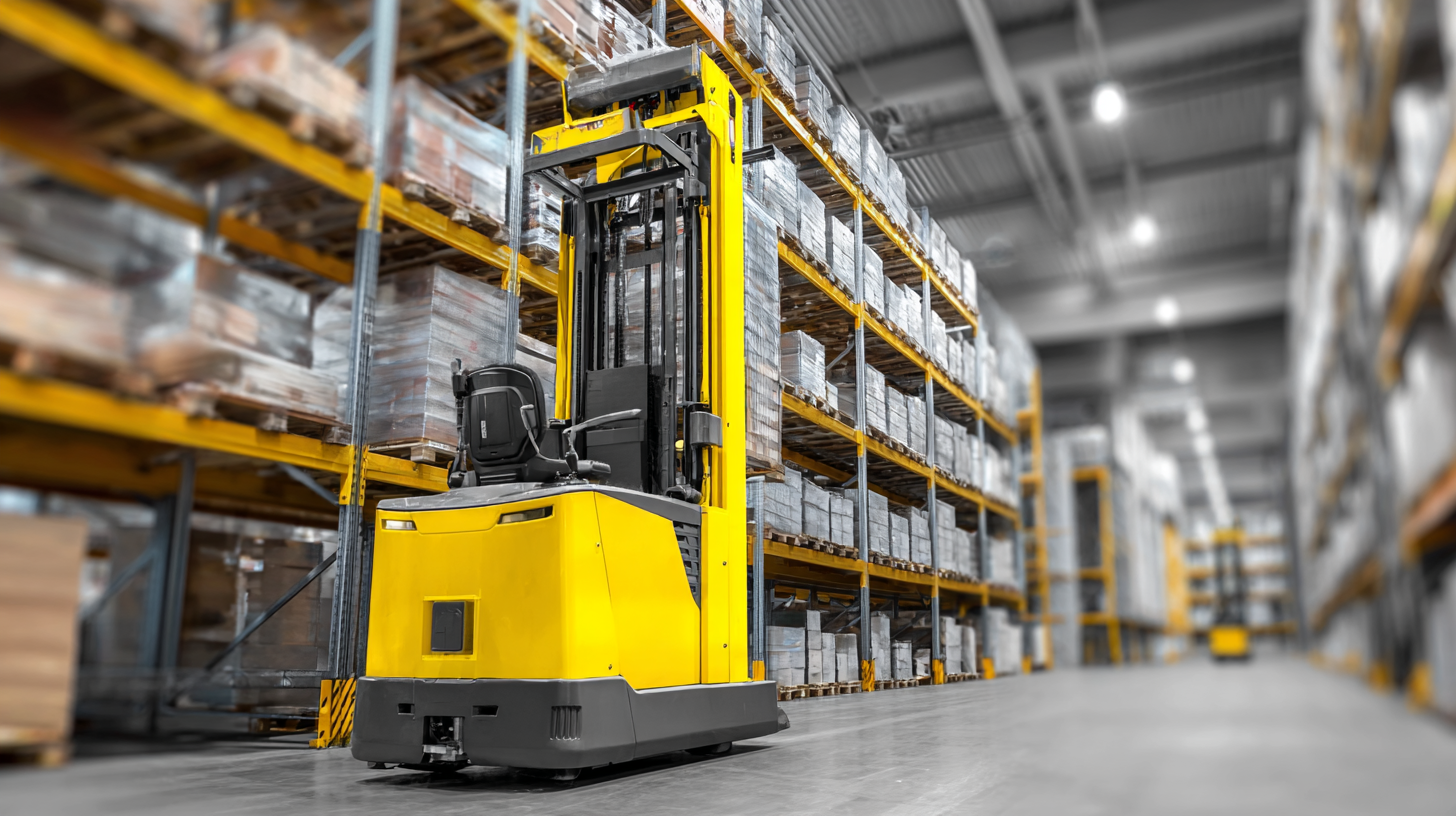
Size requirements are equally important and can greatly influence maneuverability within your warehouse. Assess the dimensions of your aisles and the space between racks to determine the appropriate width and length of the pallet jack. A more compact model can navigate smaller spaces effectively, while larger units may be suitable for bigger warehouses with wider aisles. Additionally, consider the turning radius of the jack; a smaller turning radius allows for better maneuvering in tight spots. By thoroughly evaluating both load capacity and size, you can select a rideable pallet jack that enhances productivity while ensuring safety in your warehouse environment.
When selecting a rideable pallet jack for warehouse operations, safety and maintenance should be a top priority. Recent incidents underline the importance of adhering to strict safety protocols. For instance, a worker sustained serious leg injuries after being struck by a telehandler while using a ride-on pallet truck, leading to a significant financial penalty for the company involved. Such cases highlight the need for comprehensive training and safety measures to prevent workplace accidents.
In addition to safety training, maintaining rideable pallet jacks is critical for optimal performance and longevity. Implementing a routine maintenance schedule can mitigate risks associated with mechanical failures. Studies reveal that regular inspections and servicing significantly reduce the likelihood of equipment-related accidents. The integration of advanced technologies such as lithium-ion batteries and autonomous operating systems in newer models also emphasizes the industry's shift towards improving not only workflow efficiency but also safety standards. By focusing on both maintenance practices and updated safety equipment, warehouses can enhance overall operational safety and efficiency.
| Feature | Description | Maintenance Requirement | Safety Considerations |
|---|---|---|---|
| Load Capacity | The maximum weight the pallet jack can safely carry. | Regularly check for structural integrity and weight limits. | Avoid exceeding load capacity to prevent accidents. |
| Battery Type | Different types of batteries (lead-acid, lithium-ion). | Inspect and maintain battery regularly for longevity. | Follow proper charging protocols to avoid hazards. |
| Lift Height | The maximum height the forks can reach. | Lubricate lift mechanisms to ensure smooth operation. | Ensure operators are trained in safe lifting techniques. |
| Turning Radius | The needed space to turn the pallet jack. | Check and adjust wheel alignment periodically. | Be aware of surroundings to prevent collisions. |
| Braking System | Types of braking mechanisms used. | Test brakes regularly for responsiveness. | Ensure operators understand how to use brakes effectively. |
When selecting a rideable pallet jack for your warehouse, understanding the cost and long-term value is essential for making an informed decision. Initial pricing of these machines can vary significantly based on brand, features, and capacities. While a higher upfront cost might seem daunting, investing in a quality rideable pallet jack often leads to savings in the long run through enhanced durability, reduced maintenance, and increased operational efficiency. A well-constructed unit can handle heavy loads and operate smoothly over time, minimizing the need for frequent replacements.
Additionally, consider the total cost of ownership, which includes factors like maintenance, repair, and fuel or battery costs. Investing in electric rideable pallet jacks can lower long-term operational costs due to less frequent service needs and reduced energy consumption compared to gas-powered models. Businesses should also evaluate how the right pallet jack can improve productivity and labor costs. By streamlining operations, these machines not only help in moving products efficiently but can also lead to decreased labor costs and improved employee satisfaction, thereby maximizing the overall return on investment.
